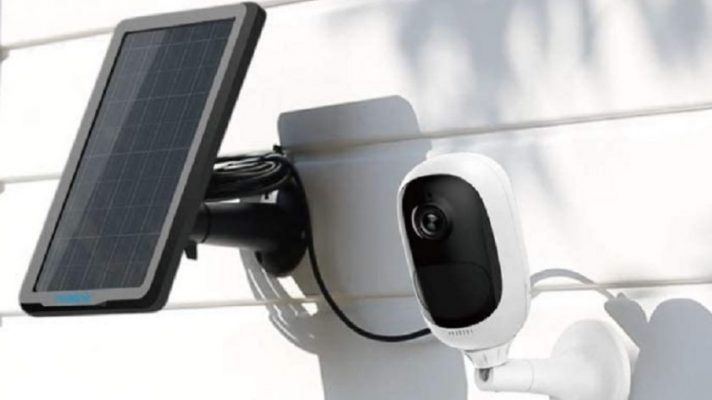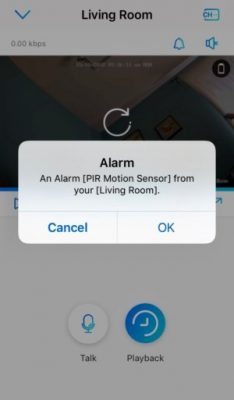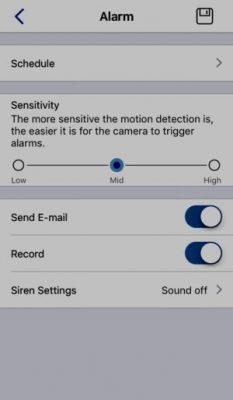Which has long night vision – Argus 2 vs Argus Pro? Both Argus camera retain their predecessor’s white capsule-shaped enclosure and their impressive specs: a 130-degree field of view, 1080p resolution, night vision up to 33 feet, motion detection, and two-way audio. It also keeps the IP65 ingress protection rating, meaning neither harmful dust nor projected jets of water can get in and damage the camera. Which one is better – Argus 2 vs Argus Pro?
Some changes were made to improve the camera’s operation, though. One of the most significant was replacing the original Argus’ four non-rechargeable CR123A batteries with a 63V, rechargeable lithium battery. This allows you to charge the camera directly from an AC outlet, or, if you’re using it outside, provide continuous power by connecting it to Reolink’s Solar Panel—an accessory designed specifically for the Ar.

Specifications comparison – Argus 2 vs Argus Pro
Reolink Argus 2 specs
- Video Format: H.264
- Wireless Security: WEP(ASCII)/WPA-PSK/WPA2-PSK
- WiFi Standard: IEEE 802.11b/g/n
- Camera Size: 3.8 x 2.3 x 2.3 in
- Weight (Battery included): 8.1 oz
- Operating Temperature: 14° to 131° F
- 1 x Pack of Screws and Mounting Hole Template
- 1 x Quick Start Guide and Surveillance Sign
Argus Pro specs
- Video Format: H.264
- Wireless Security: WEP(ASCII)/WPA-PSK/WPA2-PSK
- WiFi Standard: IEEE 802.11b/g/n
- Camera Size: 3.8 x 2.3 x 2.3 in
- Weight (Battery included): 8.1 oz
- Operating Temperature: 14° to 131° F
- PIR Detecting Distance: up to 30 ft
- PIR Detecting Angle: 130° horizontal
In the box – Argus 2 vs Argus Pro
| Argus 2 | Argus Pro | |
| Package contents | 1x Argus 2 Camera including Rechargeable Battery 1x Outdoor Security Mount (with a hook & loop strap) 1x Wall Mount 1x Micro USB Cable 1x White Skin (with a small rope) 1x Quick Start Guide 1x Surveillance Sign Other Accessories for Installation | 1 x Reolink Argus Pro 1 x Rechargeable Battery 1 x Outdoor Security Mount (with a hook and loop strap) 1 x White Skin 1 x Reset Needle 1 x Micro USB Cable 1 x Pack of Screws and Mounting Hole Template 1 x Quick Start Guide and Surveillance Sign |
Argus 2 vs Argus Pro comparison chart
| Argus Pro | Argus 2 | |
|---|---|---|
| Recording | Motion events to SD card | Motion events to SD card |
| Data Transmission | 2.4Ghz WiFi | 2.4GHz WiFi |
| Viewing Angle | 120° | 130° |
| Motion triggered | Moving object | Thermal or Moving object |
| Night Vision | 33ft | Starlight |
| Cloud | ✓ | ✓ |
What are the similarities or differences – Argus 2 vs Argus Pro?
Night Vision
Even though Argus 2 and Argus Pro have the same case, there are still two differences between them:
- Argus 2 is embedded with Starlight 1080P sensor while Argus Pro comes with a normal 1080P sensor.
- Argus 2 supports both outdoor security mount and wall magnetic mount, while Argus Pro only supports the former.
Viewing Angle
Argus 2 Wider field of vision to cover more and see more. The battery powered outdoor camera with 130° wide viewing angle never miss a detail.
- PIR Detecting Distance: up to 30ft
Argus Pro comes with the battery powered outdoor camera having 130° wide viewing angle to get every details.
Motion Detection Record
Argus 2 sends instant motion alerts via email or notifications push to your device once triggered. Live view with two-way audio get you involved right away.
- 75db siren alarm helps to threaten potential-burglar away.
Argus Pro also share the same feature – Instant motion alerts via email or notifications push to your device once triggered. The potential-burglar are always stay away as it has customized siren alarm.
Works with Google Assistant
Argus 2
Hands-free smart home control experience by saying “Hey Google, show me the backyard” and you will see live feed from the camera on your Google Nest Hub or Chromecast-enabled TVs.
Argus Pro
Just say “Hey Google, show me the backyard” and you will see live feed from the camera on your Google Nest Hub or Chromecast-enabled TVs.
Lasting power with solar option
Equipped with a rechargeable battery, Reolink Argus 2 has long lasting power per charge that saves your energy. It can also get non-stop power when working with Reolink solar panel (Sold separately).
Argus Pro can go totally wire-free thanks to the rechargeable battery and WiFi connectivity. No wiring and no drilling, Argus Pro is portable to fit in anywhere.
How to set up and use?
The Reolink app’s guided setup is straightforward and painless, requiring you to scan a couple of QR codes—one on the camera, the other displayed in the app itself—to connect the camera to your network. The capsule-shaped camera has a flat bottom, so if you’re using it indoors you need only place it on a table of shelf. Unlike the Argus 2, the Pro does not come with a magnetic ball mount for affixing the camera to a wall.
Setting the camera up for outdoor use is a little more involved. You’ll first need to lock it to the outdoor security mount, then screw the mount to an exterior wall or eave. A set of screws and a mounting hole template are included with the camera to simplify the job. A mounting strap is also provided, which threads through the bottom of the mount so you can loop it around a tree or fence post if you’d rather.
If you’re going to use the solar panel, you’ll need to also screw its mount adjacent to the camera (again screws and a mounting template are included, but there’s no strap), and then slot the panel to the mount and angle it to receive direct sunlight. Finally, you must connect the solar panel to the camera with the supplied micro-USB cable.
The Argus Pro/Argus 2 has an IP65 rating, meaning it’s protected against harmful dust and jets of water, and it has an operating temperature of 14 degrees to 131 degrees F. The camera also comes with a rubber skin you can slip over it for extra protection from the elements. The solar panel’s micro-USB plug has a rubber hood to protect it from water ingress, as well
The Reolink app puts all the Argus’s controls on the camera’s home screen beneath the live feed pane. You can play/pause the stream, take a screenshot, or manually activate video recording. You can also toggle the resolution from 1080p down to 720p if streaming starts to stutter as you move the camera further from your Wi-Fi network. At the bottom of the screen are a push-to-talk button, and a playback button that takes you to your library of motion-detected recorded clips.
The Pro’s video quality was as good as the Argus 2’s, with balanced lighting, sharp detail, and vibrant colors. Night vision illuminates up to around 30 feet and with enough clarity that I didn’t really miss the Starlight sensor.
Motion detection worked reliably well. The alerts tell you only that the camera recognized motion, but because the Pro uses PIR detection, which picks up heat emitted by living bodies, I could reasonably expect the camera was tripped by either a person or a pet rather than a tree branch shaking in the wind. Tapping the motion detection alert message launches the app and takes you directly to the live stream, so you can quickly see what triggered it. That speed is comforting when you’re away from home.
The default motion sensitivity seemed just right in my tests, but you can adjust it in the app’s settings menu using a simple slider. You can also choose how you want the camera to respond to detected motion—record video, send you an email, sound the onboard siren, or all three. By default, the camera records eight-second clips of detected activity but you can extend that to 15 or 30 seconds in the app settings.
Reolink claims its battery-powered cameras get four to six months of power per charge depending on usage. The app doesn’t offer the same depth of battery life data for the Pro as it does for the Argus 2—which would even tip you off to usage that was unduly draining the battery—but it does provide a battery level indicator and alerts you when the battery is getting low on power.


